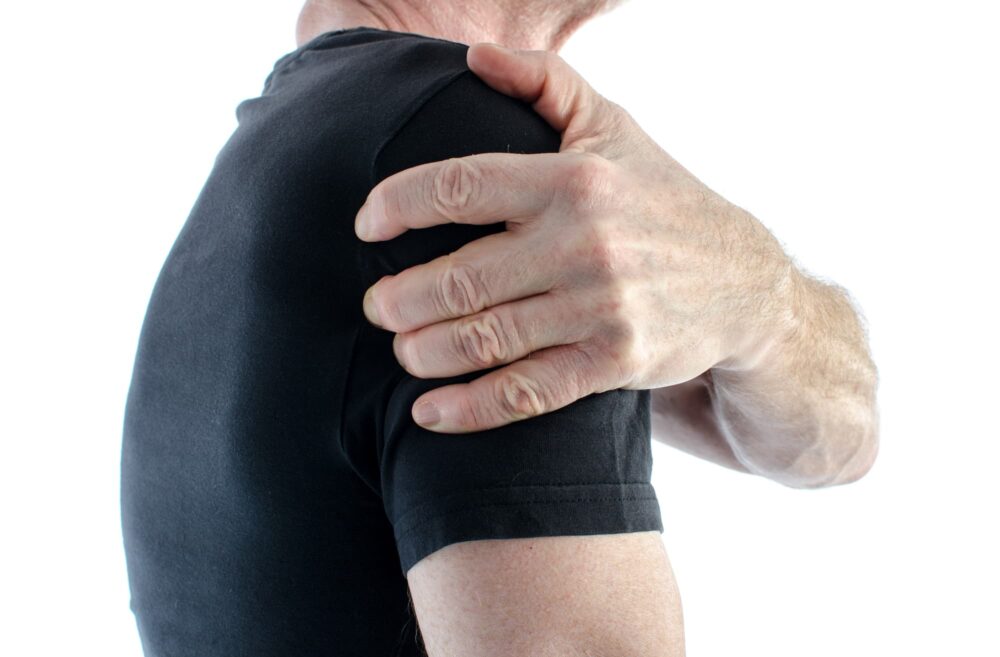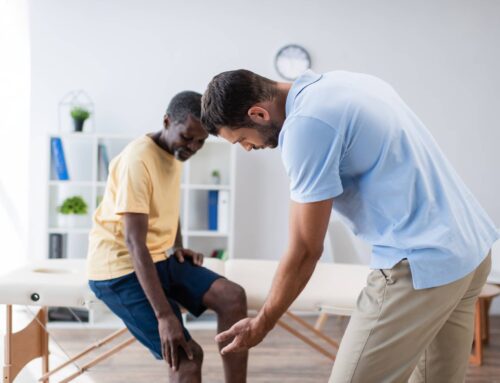Traditional treatments for shoulder injuries often involve surgery or lengthy rehabilitation, but there is a groundbreaking alternative that is changing the game. Stem cell therapy has emerged as a highly successful and non-invasive option for treating shoulder injuries. By harnessing the regenerative potential of stem cells, medical experts are achieving remarkable results without the need for surgery. With this innovative approach, you can say goodbye to long recovery times and hello to a pain-free future. Stem cell therapies offer a non-surgical alternative that promotes natural healing and regeneration in your shoulder joint.
In this article, we will explore the regenerative potential of stem cells, discuss non-surgical alternatives to traditional treatments, and highlight some of the remarkable outcomes achieved through stem cell therapies. Get ready to discover the future of orthopedic medicine as we delve into the power of stem cells in healing shoulder injuries.
Understanding Stem Cell Therapy for Shoulder Injuries
Stem cell therapy represents a cutting-edge approach to treating shoulder injuries, allowing for enhanced understanding and potential for successful outcomes. Stem cell research has shown promising results in the field of regenerative medicine, with clinical trials demonstrating its therapeutic potential in shoulder rehabilitation.
Shoulder injuries are common and can result from various causes such as sports-related activities, repetitive motions, or aging. Traditional treatments like physical therapy or surgery may not always provide satisfactory results. However, stem cell therapy offers a new avenue for treatment by harnessing the body’s own healing abilities.
In stem cell therapy for shoulder injuries, stem cells are extracted from the patient’s own body or obtained from a donor source. These cells have the unique ability to differentiate into different types of cells and promote tissue regeneration. Once harvested, the stem cells are injected into the injured area of the shoulder joint.
Clinical trials have shown that this approach can lead to improved shoulder pain relief and increased range of motion in individuals with shoulder injuries. The injected stem cells stimulate tissue repair by releasing growth factors and cytokines that promote healing and reduce inflammation. Furthermore, stem cell therapy has shown potential in treating conditions such as rotator cuff tears, tendonitis, and osteoarthritis of the shoulder joint. By targeting the underlying cause of these conditions rather than just managing symptoms, stem cell therapy offers hope for long-term recovery.
Stem cell therapy holds great promise in addressing shoulder injuries through tissue regeneration and promoting successful outcomes. Ongoing research and clinical trials continue to expand our understanding of this innovative treatment approach. With further advancements in technology and techniques, it is expected that more individuals will benefit from this cutting-edge therapy in the future.
Regenerative Potential of Stem Cells
Imagine your body’s own powerful repair system, capable of rejuvenating and restoring damaged tissues in your shoulder with the help of tiny regenerating cells. Stem cells have shown immense potential in the field of regenerative medicine, offering a promising solution for individuals suffering from shoulder injuries.
Here are three exciting applications and therapeutic benefits that stem cell therapy has demonstrated in clinical trials:
- Tissue Regeneration: Stem cells possess the unique ability to transform into various types of specialized cells found in our bodies. When injected into injured areas of the shoulder, these cells can differentiate into specific tissue types, such as cartilage, tendons, or ligaments. This process promotes tissue regeneration and helps restore normal function to the affected area.
- Reduced Pain and Inflammation: Shoulder injuries often come with debilitating pain and inflammation. Stem cell therapy aims to address these symptoms by releasing bioactive substances that have anti-inflammatory properties. By reducing inflammation at the site of injury, stem cells can alleviate pain and promote healing.
- Improved Healing Process: Traditional treatments for shoulder injuries may not always provide satisfactory results due to limited regenerative capacity. However, stem cell therapy offers a novel approach by enhancing the natural healing process within your body. By introducing an abundant supply of regenerating cells to the injured area, this treatment accelerates tissue repair and improves overall outcomes.
These potential applications highlight the significant therapeutic benefits that stem cell therapy holds for individuals with shoulder injuries. As ongoing research continues to explore its full potential, it is becoming increasingly evident that harnessing our body’s own regenerative capabilities through stem cell therapy can revolutionize how we treat these types of injuries in the future.
Non-Surgical Alternatives to Traditional Treatments
One alternative to traditional treatments for shoulder injuries is opting for non-surgical options that can alleviate pain and aid in the healing process. Platelet-rich plasma (PRP) therapy is a popular choice among athletes and individuals seeking non-invasive treatment for their shoulder injuries. PRP involves extracting a small amount of blood from the patient, spinning it in a centrifuge to separate the platelets, and then injecting the concentrated platelets back into the injured area. These platelets contain growth factors that promote tissue regeneration and accelerated healing.
Another non-surgical option is physical therapy, which focuses on exercises and stretches to improve range of motion, strengthen muscles, and reduce pain. Physical therapists tailor their treatment plans based on each individual’s specific needs and goals. This form of therapy not only helps relieve pain but also helps prevent future injuries by improving posture, stability, and overall shoulder function.
Acupuncture therapy has also shown promise in treating shoulder injuries. By inserting thin needles into specific points along energy meridians in the body, acupuncture stimulates blood flow, reduces inflammation, and promotes natural healing processes. Many patients report significant pain relief after undergoing acupuncture sessions.
Prolotherapy options involve injecting a solution into damaged ligaments or tendons to stimulate tissue repair and regeneration. This solution typically contains substances like dextrose or saline that cause controlled inflammation at the site of injury, triggering the body’s natural healing response. Lastly, some individuals turn to homeopathic remedies as an alternative treatment for shoulder injuries. These remedies may include herbal supplements or topical creams containing ingredients known for their anti-inflammatory properties. While these non-surgical alternatives offer promising results for many individuals with shoulder injuries, it is important to consult with a healthcare professional before pursuing any treatment option. They can provide personalized recommendations based on your specific condition and medical history.
Remarkable Results Achieved with Stem Cell Therapies
Impressive results have been achieved through the use of stem cell therapies, including both embryonic stem cells and adult stem cells, in addressing various medical conditions. When it comes to shoulder injuries, clinical trials have shown promising outcomes. Stem cell treatments, utilizing healthy cells derived from sources like bone marrow, have been found to effectively repair damaged tissues and promote healing in the shoulder joint.
Rehabilitation protocols play a crucial role in the success of stem cell therapies for shoulder injuries. Physical therapy exercises are commonly prescribed to patients after undergoing stem cell treatment, complementing the regenerative effects of the cells. These exercises help strengthen the muscles around the injured area and improve range of motion. This combination of stem cell therapy, utilizing either embryonic or adult stem cells, and rehabilitation protocols has led to remarkable improvements in patients’ overall function and quality of life.
Stem cell therapies provide an alternative treatment option for individuals who may not be suitable candidates for surgery or who wish to avoid invasive procedures altogether. The non-surgical approach offered by stem cells, whether derived from embryonic or adult sources such as bone marrow, has gained significant attention in recent years due to its potential benefits and minimal risks. Patient satisfaction with stem cell therapies for shoulder injuries is high, as many individuals experience decreased pain levels and improved mobility after receiving treatment with either embryonic or adult stem cells.
Moreover, these positive effects tend to be long-lasting, providing patients with sustained relief from their shoulder problems. In terms of long-term effects, studies have indicated that stem cell treatments, utilizing either embryonic or adult stem cells, can lead to tissue regeneration and remodeling within the shoulder joint. This means that not only do patients experience immediate improvements, but they also benefit from ongoing healing processes that continue well beyond the initial treatment period.
Overall, remarkable results have been achieved with stem cell therapies, utilizing both embryonic and adult stem cells, for shoulder injuries. Clinical trials, along with rehabilitation protocols, offer effective treatment options that can significantly enhance patient outcomes and satisfaction while providing long-term benefits such as tissue regeneration and remodeling. These findings highlight the diverse clinical applications of stem cell therapies in addressing shoulder injuries and emphasize the importance of further research in this field.
The Future of Orthopedic Medicine: Harnessing the Power of Stem Cells
The potential of harnessing the power of stem cells to revolutionize treatment options for musculoskeletal conditions is being actively explored in the field of orthopedic medicine. Recent advancements have shown that different types of stem cells possess immense therapeutic potential in regenerative medicine, particularly in the treatment of musculoskeletal conditions.
Clinical studies have demonstrated the effectiveness of stem cell therapies, including adult stem cell therapy and human stem cells, in addressing shoulder injuries. By directly injecting stem cells into damaged tissues or joints, researchers have observed significant improvements in pain relief, range of motion, and overall function. These treatments offer a promising alternative to invasive surgeries and lengthy rehabilitation periods.
In addition to shoulder injuries, stem cell therapies show promise in treating various musculoskeletal conditions, including osteoarthritis and tendon tears. The regenerative capabilities of stem cells have the potential to transform orthopedic medicine, providing less invasive and more effective treatment options.
To optimize the use of stem cells in orthopedics, ongoing research focuses on understanding their full potential and developing protocols for isolating and expanding these cells while preserving their regenerative properties. Scientists are also studying immune responses and identifying specific markers on stem cell surfaces that indicate their potency, ensuring safe and targeted delivery into the desired tissues.
As researchers continue to uncover new insights into tissue regeneration and stem cell behavior, we can anticipate further breakthroughs in the field. The future of orthopedic medicine holds the promise of utilizing stem cells to provide effective treatment options for patients with debilitating musculoskeletal conditions. With regenerative medicine taking center stage, exciting developments lie ahead.
Final Thoughts
So there you have it, the successful outcomes of stem cell therapies for shoulder injuries. By harnessing the regenerative potential of stem cells, patients can now opt for non-surgical alternatives, such as stem cell injections, which provide remarkable results in healing damaged tissues. These advancements in stem cell technologies are revolutionizing the field of orthopedic medicine, offering a new avenue for treatment.With ongoing research and advancements in understanding different types of cells and their regenerative capabilities, we can expect even more innovative applications of stem cells, including those derived from adult tissues.
As the field progresses, it’s important to seek reputable stem cell clinics that follow ethical practices and adhere to rigorous safety standards. So if you’re dealing with a shoulder injury, consider exploring the promising world of stem cell therapy and consult with experts in the field to determine the best course of action for your condition.





